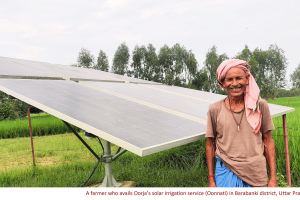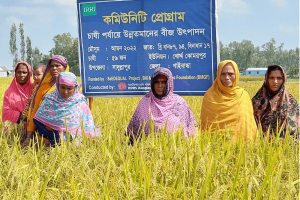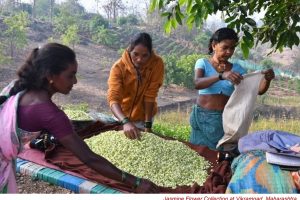The Chambal region of Madhya Pradesh, India has an abundant availability of flora that provides nectar and pollen to honey bees throughout the year. Keeping this in view, the Krishi Vigyan Kendra (KVK) Morena promoted bee keeping as it can generate selfemployment and also enhance crop productivity. Bee keeping requires fewer investments and provides good income. Encouraged by the success of bee keeping in Morena, farmers and rural youth
From other districts of the state have now started bee keeping as a new vocation. Dr A S Yadav and Dr Y P Singh share their experience with promotion of bee keeping in this Good Practice Note
CONTEXT
The Chambal region of Madhya Pradesh (MP) has an abundant flora of sesame, green gram, black gram, pearl millet, rape seed, mustard, short duration pigeon pea, coriander, mustard and berseem and during August to April. During the rest of the year, the flora of forest plants such as adusa (Adhatoda vasica), kher (Acacia catechu), drum-stick (Moringa oleifera), shisham (Dalbergia sissoo), neem (Azadirachta indica) are available in abundance. Honey bees (Apis mellifera) are the most important agents of cross pollination in this region. The region is semiarid and the conditions of this region (temperature and availability of flora) are highly favorable for multiplication of honey bees and development of apiculture as a major source of employment.
During 2004-05, Krishi Vigyan Kendra (KVK), Morena (http://rvskvv.nic.in/kvkmorena) decided to promote bee keeping in its adopted villages (Sirmourkapaura, Nayagoan and Mirghan). It conducted a 10 day training programme on bee keeping for 28 selected rural youth during that year. All these trainees started bee keeping with 5-20 colonies (depending on their economic status) and the KVK scientists supported them with advice and regular visits to their fields. Honey production increased up to 80 Kg/colony during this season and observing this progress, rural youth from neighboring villages (Gapara, Bistoli, Pahargarh) approached the KVK for training in bee keeping. Since then KVK, Morena has organized several training programmes on bee keeping. Many of the bee keepers trained by the KVK are now working as master trainers for other organizations to promote bee keeping. Morena District (Box 1) is also ranked first in the state of MP for honey production.
| Box 1: Morena District Chambal Division is an administrative geographical unit of Madhya Pradesh state of India. Currently, the division consists of three districts, Morena, Bhind and Shoepur. Morena is the admistraive headquarters of Chambal Division. About 50 per cent of the total geographical area of Morena district is available for cultivation and nearly about 58.74 per cent of the cultivable area in the district is irrigated. Iimportant rivers such as Chambal, Kunwari, Asan and Sank pass through this district. Canal is the main source of irrigation, which accounts for 42.94 per cent of the total irrigated area. Agriculture and dairying are the main occupation of the people of Morena. The major crops include wheat, gram, rapeseed-mustard during rabi and pear millet, pigeon pea and sesame in Kharif. Majority of the farm holdings are small (31.3%) and marginal (23.5%). The KVK, Morena was established in 2004 and it operates under Rajmata Vijayaraje Scindia Krishi Vishwa Vidyalaya, (Gwalior) with financial support from the Indian Council of Agricultural Research ICAR). |
Apart from increased income, the bee keeping has also led to increased productivity of crops
(mainly mustard, pigeon pea and barseem) through better pollination. Approximately 32003500 beekeepers in the Chambal region currently have 55,000-60,000 colonies (Apis mellifera) that extract 4,899 tones of honey contributing about 4.33 million US$ income in a year.





Add Comment